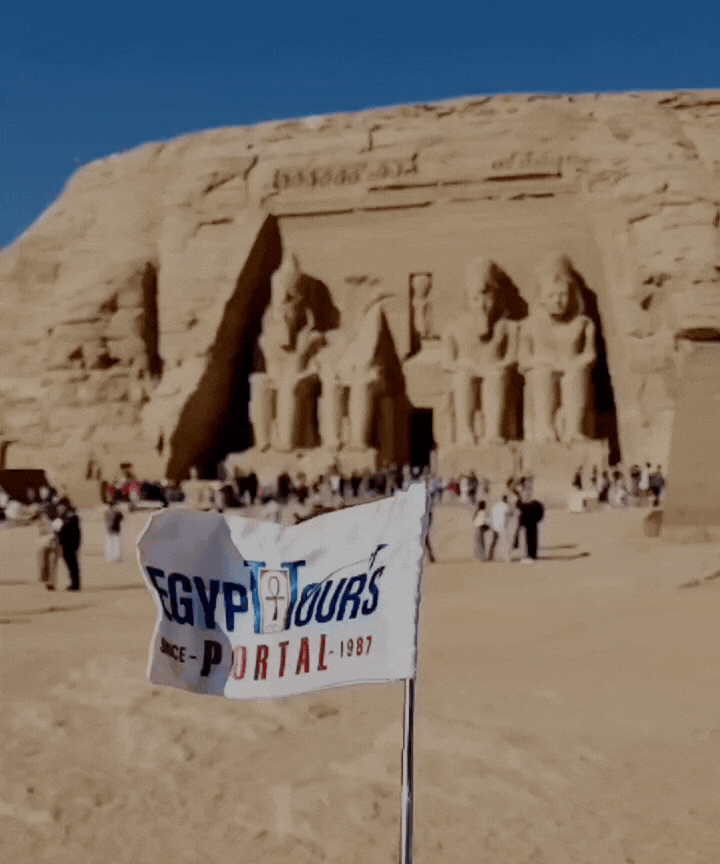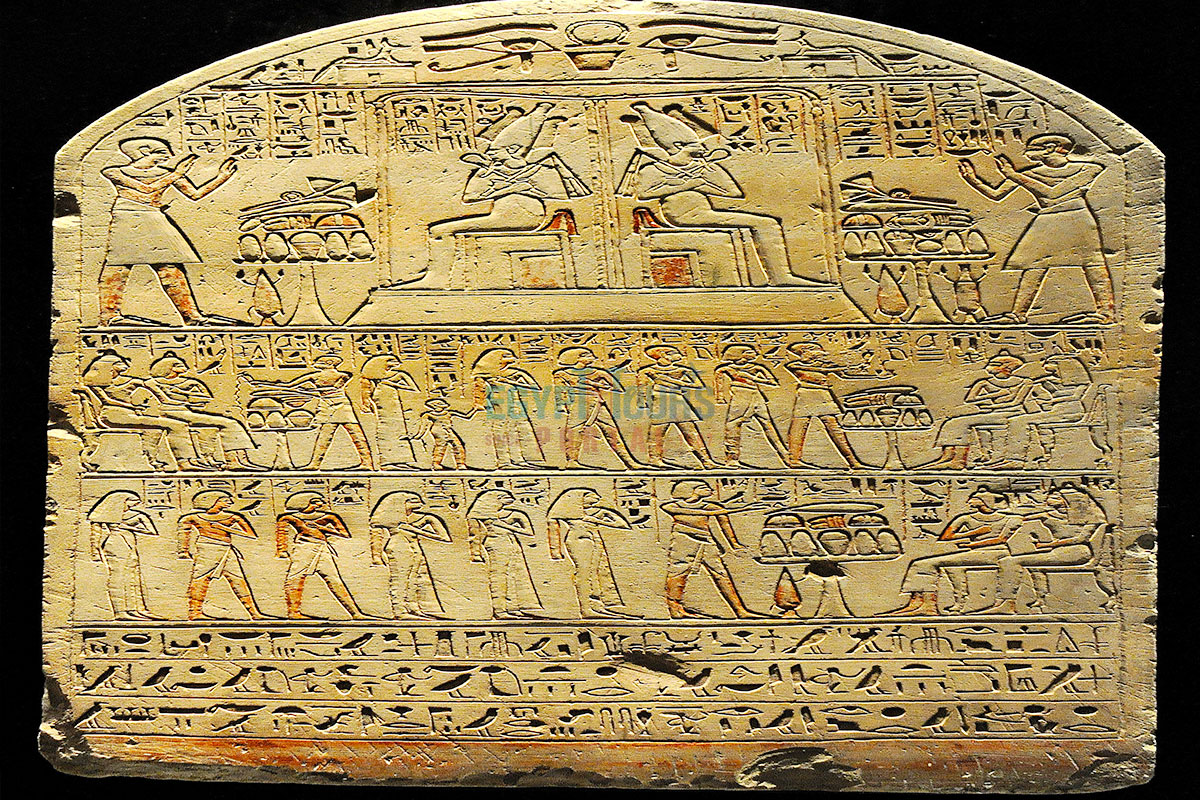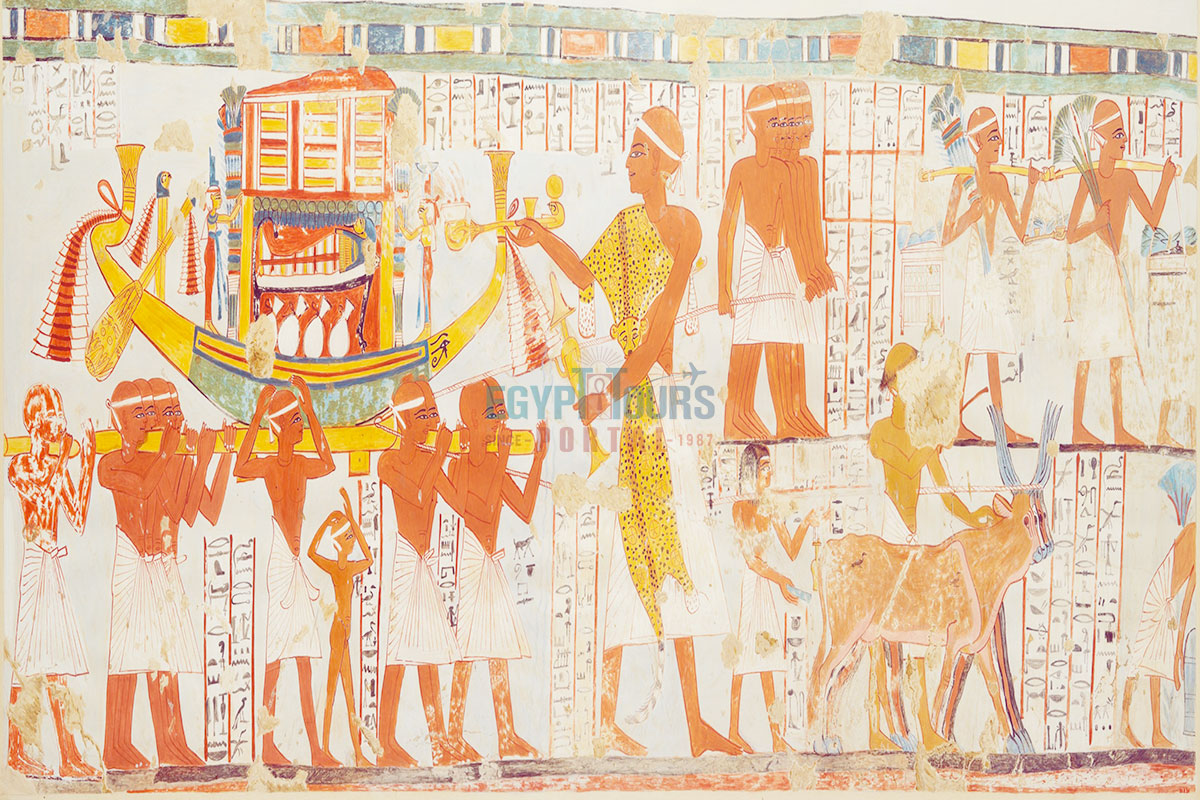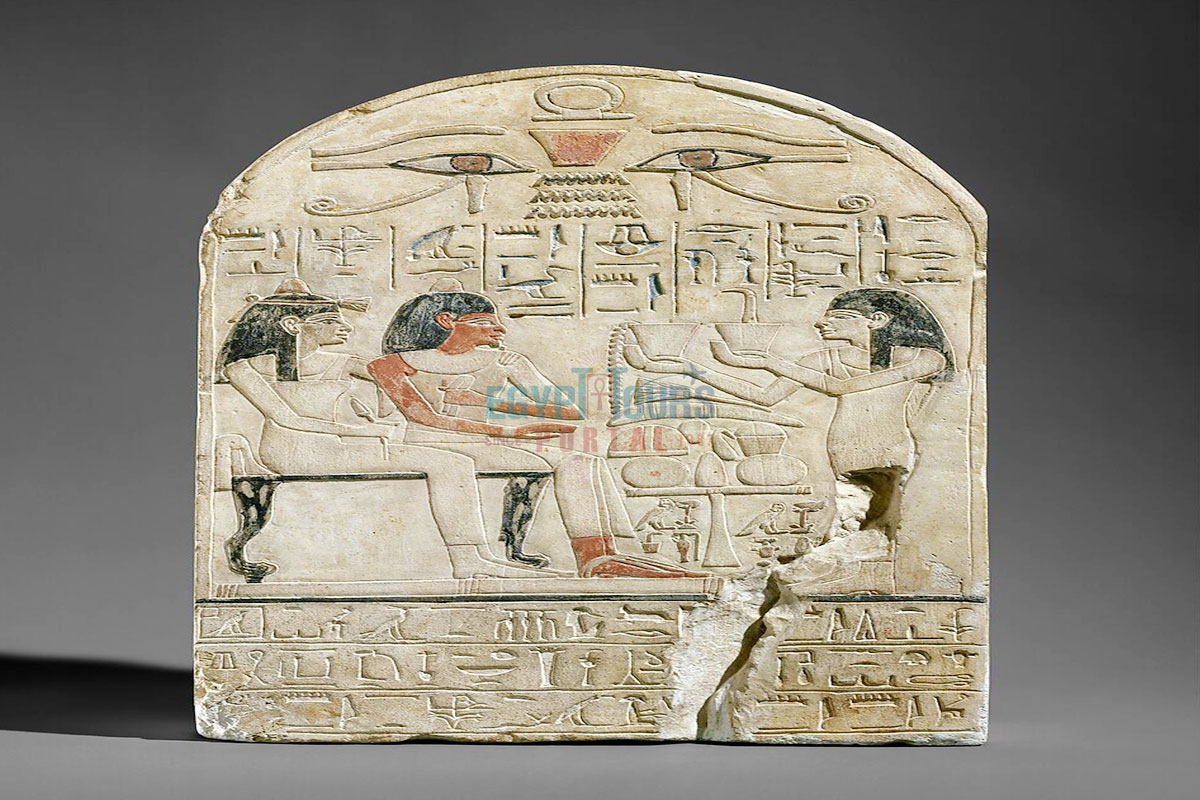Discover the essential role of priests in ancient Egypt, where they performed sacred rituals, managed grand temples, and influenced politics. These revered figures also advanced spirituality, medicine, and education, showcasing their profound impact on society and culture.


Priests in Ancient Egypt stood as pivotal figures, bridging the mortal and divine worlds. Priests were known as "servants of the gods" they were entrusted with the sacred duty of preserving ma’at, the universal harmony essential for life. From performing daily temple rituals to orchestrating grand religious festivals, their role was far-reaching, blending spiritual, political, and social responsibilities. priests in ancient Egypt were custodians of knowledge, healers, and administrators.
They managed vast temple estates, contributed to medical advancements, and upheld cultural traditions that shaped the society's spiritual and material worlds. This article will shed light on the lives and duties of these influential figures, exploring how they maintained the balance between earthly existence and the divine realm, ensuring Egypt's prosperity and legacy for millennia.

Priests in ancient Egypt were the custodians of spirituality, entrusted with maintaining the delicate balance of ma’at which is the principle of cosmic harmony and order that sustained life. Their duties were far-reaching and vital to both the spiritual and societal fabric of Egypt. From conducting sacred rituals and offerings to orchestrating grand religious Ancient Egyptian Festivals, priests ensured that the gods remained present and favorable toward the land and its people. Their influence extended beyond the temple walls, touching nearly every aspect of Egyptian life, from politics and economics to medicine and education.
The origins of the priesthood can be traced back to the Early Dynastic Period (c. 3150–2613 BCE), when the foundations of organized religion and temple practices began to take shape. This system evolved during the Old Kingdom (c. 2613–2181 BCE), a time marked by the construction of monumental temples and mortuary complexes. These developments formalized the priesthood's structure, establishing it as a cornerstone of ancient Egyptian civilization.
Priests acted as mediators between humans and the divine, performing intricate rituals designed to awaken and sustain the gods' spiritual energy. The Egyptians believed their Ancient Egyptian Gods and Goddess controlled everything—from the Nile’s annual flooding to the fertility of the soil—and that the priests' efforts were essential to maintaining the natural order.
Explore more magnificent details about the rituals, beliefs, and customs of the religion of the ancient Egyptians.
Read More
The daily lives of priests were defined by their meticulous dedication to maintaining the sanctity of temples and honoring the gods. Rituals began at dawn, with purification rites that included bathing in sacred pools and donning clean linen garments to symbolize spiritual readiness. High-ranking priests entered the temple sanctuary to perform the sacred “awakening” ritual, during which they recited hymns and prayers to reanimate the deity's ka (spiritual essence). Incense was burned, and the god's statue was presented with offerings, including bread, beer, fruits, vegetables, and meats.
These offerings were thought to nourish the gods spiritually. Once the divine essence had been absorbed, the food was redistributed among the temple staff. Evening rituals, involving sprinkling water and sealing the sanctuary, ensured that the god rested undisturbed overnight. This cyclical routine emphasized the symbiotic relationship between the gods and the people, with priests as vital intermediaries.
Festivals formed an integral part of religious life, providing opportunities for both private devotion and public participation. Events like the Opet Festival at Karnak involved elaborate processions in which the statues of gods were paraded through the streets, symbolizing divine blessings and renewal. These occasions were often timed to align with significant agricultural or seasonal cycles, such as the inundation of the Nile, or political milestones, including the coronation of a Pharaoh. Through these grand spectacles, temples reinforced communal bonds and affirmed the gods’ favor upon the land.

High priests, known as hem-netjer-tepi or “First Servants of the God,” were the most powerful figures within the temple hierarchy. They oversaw all temple operations, managed vast estates, and led major rituals. During the New Kingdom (c. 1550–1069 BCE), the High Priest of Amun at Karnak wielded immense authority, often rivaling that of the Pharaoh. High priests were not only spiritual leaders but also key political figures, advising rulers and influencing state policies.
The priesthood was highly stratified, with numerous roles assigned to specialized priests and temple staff:
These roles ensured that every aspect of temple operations, from daily worship to elaborate funerary rites, was carried out with precision and devotion.

Women held significant positions within the priesthood, particularly as priestesses serving female deities such as Hathor, Isis, and Neith. They participated in temple rituals, sang hymns, and played instruments like the sistrum during ceremonies. The position of God’s Wife of Amun, which emerged during the Middle Kingdom (c. 2040–1782 BCE), was especially prominent. By the New Kingdom, these women held substantial religious and political power, controlling temple estates and influencing state affairs. Figures like Ahmose-Nefertari and Amenirdis I exemplified this blend of spiritual and political authority.

Temples were not merely spiritual centers but also hubs of political and economic power. High priests, particularly during the New Kingdom, acted as advisors to Pharaohs, interpreting divine will and shaping governance. By the reign of Ramesses III (1186–1155 BCE), temples like Karnak controlled immense wealth, rivaling that of the royal treasury. This economic power often translated into political influence, especially during periods of weak central authority, such as the Third Intermediate Period (c. 1069–664 BCE).
Priests were instrumental in maintaining the Pharaoh's divine legitimacy. By performing rituals on behalf of the ruler, they ensured the gods’ favor upon Egypt. However, this relationship could become strained, particularly during times of political instability, when the priesthood’s growing power sometimes eclipsed that of the Pharaoh.

Temples were considered the earthly homes of the gods. Priests were charged with maintaining these spaces through daily cleaning, purification rituals, and care of the divine statues. The upkeep of temples was not merely symbolic but was believed to sustain ma’at, ensuring the continued prosperity and stability of the land.
Temples were also vital economic centers, controlling agricultural estates, trade networks, and labor forces. They provided essential community services, including education, medical care, and legal arbitration. This dual role as spiritual and economic institutions made temples central to the lives of ancient Egyptians.
Explore the roles, beliefs, tales, and traditions of the Ancient Egyptian Temples.
Read More
Priests were among the most educated members of society, mastering subjects such as Ancient Egyptian Hieroglyphs, astronomy, and theology. Temple libraries, known as Per-Ankh (“House of Life”), were repositories of religious, medical, and astronomical texts. These institutions played a crucial role in preserving and transmitting knowledge across generations.
Priests often served as healers, blending herbal remedies with magical incantations to treat illnesses. Temple clinics functioned as centers for medical practice, drawing upon texts like the Ebers Papyrus for guidance. Specialized practitioners, including the swnw (general physicians) and sau (magical healers), exemplified the integration of science and spirituality in ancient Egyptian healthcare.
Witness the fascinating details about the knowledge and skills of Ancient Egyptian Priest-Doctors.
Read More
Over time, the immense wealth and influence of the priesthood contributed to tensions with the central government. During the reign of Akhenaten (1353–1336 BCE), an attempt to centralize religious authority through monotheism temporarily curtailed the priesthood’s power. However, the institution rebounded after Akhenaten’s death, reaching its zenith during the Third Intermediate Period.
By the Late Period (525–332 BCE), corruption and the sale of priestly offices weakened the institution. With the rise of Christianity in the 4th century CE, traditional temples and priestly practices gradually disappeared. Despite this decline, the legacy of ancient Egyptian priests endures, reflecting their integral role in shaping one of history’s most remarkable civilizations.
Through their multifaceted roles, the priests of ancient Egypt were not only guardians of spirituality but also key figures in politics, education, and healthcare, highlighting their indispensable influence on one of history’s most enduring civilizations.
Ancient Egyptian priests constructed many structures and artifacts to honor their beliefs, and everyone will explore its divine beauty and grace through one of our legendary Egypt Vacations or awesome Nile River Cruises, which will reveal the most epic tales.
Private 4 Days Cairo Tour Packages for American Travelers 4 days Cairo Egypt Tour pa...
Tour Location: Cairo – Giza...
5 Days Cairo and Alexandria Tour Package For American Travelers 5 days Cairo and Ale...
Tour Location: Cairo/Giza/Alexandria...
6 Days Cairo, Luxor & Aswan Tour Package For American Travelers 6 days Cairo, Lu...
Tour Location: Cairo/Giza/Aswan/Luxor...
Amazing 7 Days Cairo and Hurghada Holiday for American Travelers 7 Days Cairo & ...
Tour Location: Cairo – Giza – Hurgh...
Priests served as intermediaries between humans and the gods, ensuring the maintenance of ma’at (cosmic harmony). Their primary role was to perform daily rituals, conduct offerings, and organize festivals to honor the gods. They sustained the spiritual energy of the deities, which was believed to protect the natural and social order. Priests were responsible for the care of temple complexes, preserving the gods’ presence on Earth, and facilitating the community’s access to divine blessings.
The daily duties of priests involved a strict routine of purification and ritual. Before entering the temple, priests bathed in sacred pools and wore clean linen garments to ensure ritual purity. Their morning tasks included:
In addition to daily rituals, priests participated in seasonal festivals, processed sacred statues, and organized communal celebrations.
Priests were often chosen from noble families or inherited their positions, as many priestly roles were passed down through generations. Candidates had to demonstrate knowledge of theology, rituals, and sacred texts. They underwent initiation rites and adhered to strict purity requirements.
The priesthood was hierarchical, High Priests (Hem-Netjer-Tepi) were the highest-ranking priests, responsible for overseeing temple operations, leading major rituals, and managing temple estates. Lector Priests (Hery-Heb) are specialists in sacred texts and are responsible for reading chants and hymns. Sem Priests conducted funerary rites and mummification ceremonies. Wab Priests are "Pure ones" tasked with maintaining temple cleanliness and assisting in rituals.
High priests, known as Hem-Netjer-Tepi (“First Servants of the God”), were the most powerful figures within the temple. They managed temple estates, coordinated rituals, and advised Pharaohs on matters of state. Prominent examples include the High Priest of Amun at Karnak, whose influence was immense during the New Kingdom. High priests also acted as mediators between the gods and Pharaoh, ensuring divine favor for the nation.
While both priests and Pharaohs served religious roles, their responsibilities differed significantly, The Pharaoh’s role was the divine ruler and the ultimate intermediary between gods and mortals, and the Pharaoh was seen as the embodiment of ma’at. The Pharaoh delegated daily temple rituals to priests while maintaining overall authority over religious practices. Priests carried out the daily rituals, performed offerings, and cared for the gods’ statues. They managed the material and spiritual needs of the temples but operated under the Pharaoh’s overarching control.
Yes, women served as priestesses in ancient Egypt, particularly in the service of female deities like Hathor, Isis, and Neith. Female priests performed rituals, sang hymns, and played instruments like the sistrum during ceremonies. Prominent roles included the God’s Wife of Amun, a position held by royal women during the Middle and New Kingdoms. These women wielded considerable religious and political influence, managing temple estates and participating in state governance.
Priests honored the gods through highly structured rituals:
Priests were closely connected to political authority, often acting as advisors to the Pharaoh. High priests, particularly during the New Kingdom, wielded significant power due to their control over temple estates and resources. Temples like Karnak amassed vast wealth, sometimes rivaling the Pharaoh’s own treasury. During periods of weak leadership, such as the Third Intermediate Period, the priesthood’s power sometimes eclipsed royal authority, creating political tensions.
Priests gained power through their religious authority and economic influence. Temples controlled extensive agricultural estates, trade networks, and labor forces, which generated immense wealth. This economic independence allowed priests to maintain their influence even during periods of political instability. Additionally, their role as interpreters of divine will gave them considerable sway over state decisions, particularly during times of crisis or weak leadership.
Priests were custodians of knowledge and played a central role in education. They studied and preserved religious texts, astronomy, medicine, and mathematics in temple libraries known as Per-Ankh (“House of Life”). These institutions served as centers for learning, where priests trained future clergy and scholars. They also authored hymns, manuals, and medical texts, ensuring the continuity of Egyptian intellectual traditions.
Temples were considered the earthly residences of the gods and required constant upkeep to remain pure. Priests were responsible for cleaning the temple, maintaining the sanctity of the sanctuary, and caring for the deity’s statue. They also oversaw the management of temple estates, which funded maintenance and rituals. Temples employed laborers, farmers, and craftsmen under the priests’ supervision to ensure the complex functioned efficiently.
Priests wore simple linen garments, symbolizing purity, and were often barefoot. They practiced daily shaving of their heads and bodies as part of their purification rituals. Symbols of their office included:
The entire country of Egypt deserve to be explored with its every heavenly detail but there are places that must be seen before any other such as the breathtaking Hurghada's red sea, The wonders of Cairo the pyramids of Giza, the great sphinx, the Egyptian Museum, Khan El Khalili Bazaar, the wonders of Luxor like Valley of the Kings, Karnak & Hatshepsut temple and the wonders of Aswan such as Abu Simbel temples, Philea temple, Unfinished obelisk and The Wonders of Alexandria like Qaitbat Citadel, Pompey's Pillar and Alexandria Library. Read more about the best places to visit in Egypt.
If you want to apply for a Visa On Arrival that lasts for 30 days then you should be one of the eligible countries, have a valid passport with at least 6 months remaining and pay 25$ USD in cash, as for the E-Visa for 30 day you should have a valid passport for at least 8 months, complete the online application, pay the e-visa fee then print the e-visa to later be presented to the airport border guard. You could also be one of the lucky ones who can obtain a free visa for 90 days. Read more about Egypt travel visa.
Egypt has a variety of delicious cuisines but we recommend “Ful & Ta’meya (Fava Beans and Falafel)”, Mulukhiya, “Koshary”, a traditional Egyptian pasta dish, and Kebab & Kofta, the Egyptian traditional meat dish.
The best time to travel to Egypt is during the winter from September to April as the climate becomes a little tropical accompanied by a magical atmosphere of warm weather with a winter breeze. You will be notified in the week of your trip if the Climate is unsafe and if any changes have been made.
You should pack everything you could ever need in a small bag so you could move easily between your destinations.
We have been creating the finest vacations for more than 20 years around the most majestic destinations in Egypt. Our staff consists of the best operators, guides and drivers who dedicate all of their time & effort to make you have the perfect vacation. All of our tours are customized by Travel, Financial & Time consultants to fit your every possible need during your vacation. It doesn't go without saying that your safety and comfort are our main priority and all of our resources will be directed to provide the finest atmosphere until you return home.
You will feel safe in Egypt as the current atmosphere of the country is quite peaceful after the government took powerful measures like restructuring the entire tourist police to include all the important and tourist attractions in Egypt. Read more about is it safe to travel to Egypt.
Wear whatever feels right and comfortable. It is advised to wear something light and comfortable footwear like a closed-toe shoe to sustain the terrain of Egypt. Put on sun block during your time in Egypt in the summer to protect yourself from the sun.
The best activity is by far boarding a Nile Cruise between Luxor and Aswan or Vise Versa. Witness the beauty of Egypt from a hot balloon or a plane and try all the delicious Egyptian cuisines and drinks plus shopping in old Cairo. Explore the allure and wonders of the red sea in the magical city resorts of Egypt like Hurghada and many more by diving and snorkeling in the marine life or Hurghada. Behold the mesmerizing western desert by a safari trip under the heavenly Egyptian skies.
There are a lot of public holidays in Egypt too many to count either religious or nation, the most important festivals are the holy month of Ramadan which ends with Eid Al Fitr, Christmas and new years eve. Read more about festivals & publich holidays in Egypt.
Egypt is considered to be one of the most liberal Islamic countries but it has become a little bit conservative in the last couple of decades so it is advised to avoid showing your chest, shoulders or legs below the knees.
Arabic is the official language and Most Egyptians, who live in the cities, speak or understand English or at least some English words or phrases. Fewer Egyptians can speak French, Italian, Spanish, and German. Professional tour guides, who work in the tourism sector, are equipped to handle visitors who cannot speak Arabic and they will speak enough English and other languages to fulfill the needs of all our clients.
The fastest way is a car, of course, a taxi. If you are in Cairo ride a white taxi to move faster or you could board the fastest way of transportation in Egypt metro if the roads are in rush hour.
The temperature in Egypt ranges from 37c to 14 c. Summer in Egypt is somehow hot but sometimes it becomes cold at night and winter is cool and mild. The average of low temperatures vary from 9.5 °C in the wintertime to 23 °C in the summertime and the average high temperatures vary from 17 °C in the wintertime to 32 °C in the summertime. The temperature is moderate all along the coasts.
It is the home of everything a traveler might be looking for from amazing historical sites dating to more than 4000 years to enchanting city resorts & beaches. You will live the vacation you deserve as Egypt has everything you could possibly imagine.









